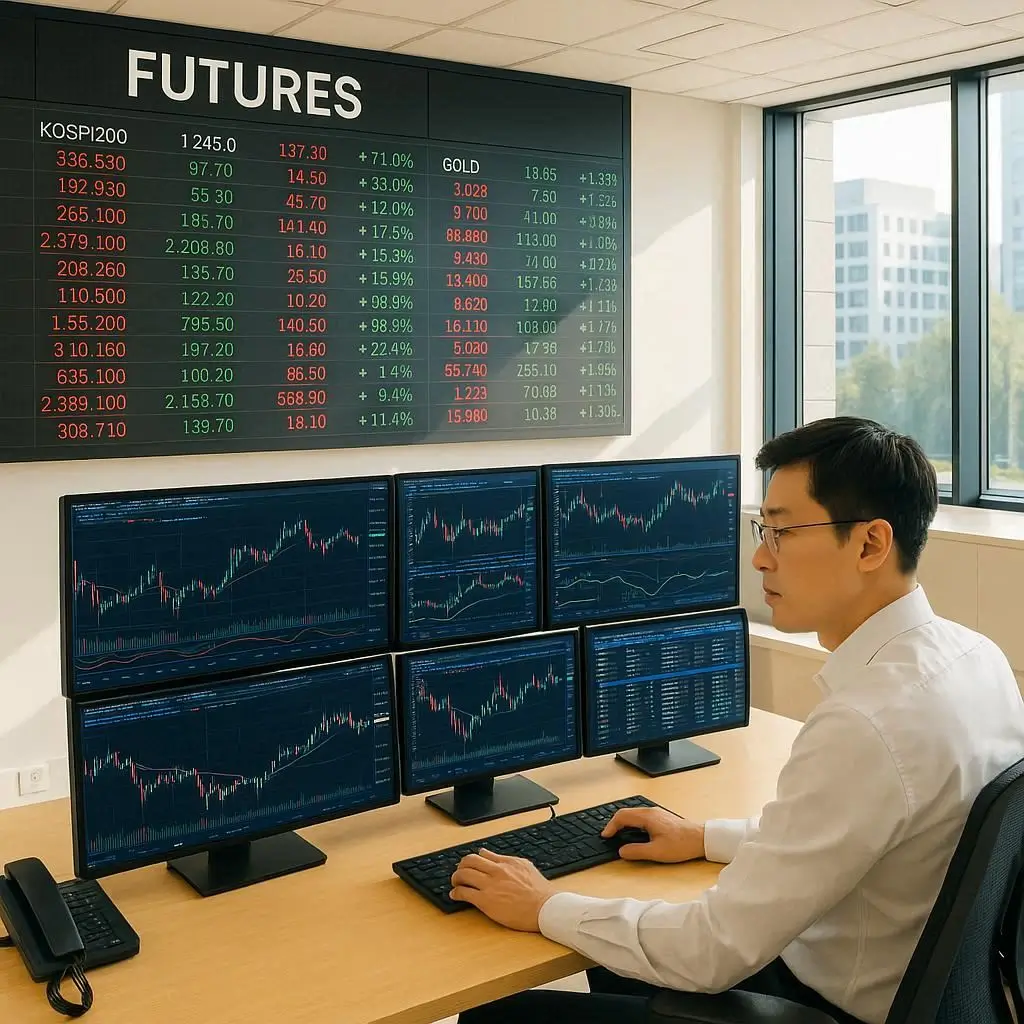Let’s explore 코스피 야간선물 실시간 is one of the most frequently referenced indicators by Korean investors who want to get a sense of the next day’s market direction before the domestic session begins. Since Korea’s stock market is closed at night, many people rely on night futures to measure how global events and U.S. market activity might impact the KOSPI index the following morning. In this article, we will cover several important areas. First, we will look at How to Check Live KOSPI Night Futures, focusing on where and how to access real-time data. Then we will move on to Delayed Quotes of KOSPI Night Futures, which are important to recognize especially if you are using free or public platforms. Finally, we will look at KOSPI Night Futures and the Korea Exchange, to understand how the official regulatory body structures and manages the futures market. Whether you are a beginner or someone looking to upgrade your market insights, following along with each section will help you build a more informed investment strategy.
How to Check Live KOSPI Night Futures
Real-time platforms such as brokerage HTS systems, market data terminals, and financial websites are the most reliable ways to monitor live KOSPI night futures. Among the most trusted sources are major Korean brokerages like Kiwoom Securities, Mirae Asset Securities, and Samsung Futures. These companies provide real-time data through their HTS and MTS platforms for users who have active trading accounts. Once logged in, you can find night futures listed under the global derivatives or index futures section. The data refreshes in near real-time, which is essential for making timely decisions during market-moving events such as U.S. CPI releases or Federal Reserve announcements.
For those who do not have access to these trading platforms, websites like Investing.com offer a more accessible alternative. By searching for KOSPI Futures on Investing.com, you can see interactive charts and candlestick patterns that closely mirror real market conditions. However, keep in mind that even though these charts update every few seconds, they may not be officially classified as real-time by Korean financial regulations. From personal experience, I have used Kiwoom’s HTS to monitor KOSPI night futures during volatile U.S. sessions, particularly when the NASDAQ shows large swings. Observing how the futures react in real-time has helped me prepare better for the next day’s trading session. The ability to compare movements in the S&P 500 and Dow Jones alongside KOSPI futures is an advantage for anyone looking to anticipate sentiment shifts before the Korean market opens.

Delayed Quotes of KOSPI Night Futures
Free services such as news portals, global finance sites, and some public apps usually provide delayed quotes for KOSPI night futures. These quotes are often delayed by 10 to 20 minutes depending on the source. This delay is especially important to recognize if you are basing investment decisions on what you see online. A delay of even a few minutes can cause a significant difference in interpretation, especially during rapid market events such as geopolitical news or major earnings announcements in the U.S. market.
For example, TradingView offers access to 코스피 야간선물 charts but indicates on the interface whether the data is real-time or delayed. If you do not have a paid subscription or broker-linked account, the data will typically show a 15-minute delay. Similarly, Yahoo Finance and some Korean finance news apps display delayed data unless you are logged in with a premium membership. Personally, I once made the mistake of relying on a delayed quote during the 2023 banking crisis involving Silicon Valley Bank. I saw what appeared to be a dip in KOSPI night futures and prepared a strategy based on that, only to realize that the actual price had already rebounded by the time I placed an order in the morning. This kind of mistake can easily be avoided by double-checking whether your data is truly real-time.
Understanding the nature of delayed quotes can protect you from misreading market sentiment. If you are not using a verified brokerage platform, always assume there may be a delay unless explicitly stated. For active traders or those reacting to real-time news, using an HTS or subscribing to a professional market data service is highly recommended.
KOSPI Night Futures and the Korea Exchange
The Korea Exchange or KRX is the official body that manages and regulates KOSPI futures, including the extended trading hours known as the night session. KRX provides detailed information about futures contracts on its website, including product specifications, trading hours, tick size, expiration cycles, and margin requirements. For investors who want to understand the structure of the futures market beyond just price movement, KRX is the best place to start.
According to the Korea Exchange, KOSPI200 night futures are traded from 6:00 PM to 5:00 AM Korean Standard Time. This session is strategically aligned with U.S. market hours to enable Korean investors to respond in real-time to global economic events. KRX also publishes daily trading volumes, open interest data, and settlement prices, which can be found in their derivatives section online. Although KRX does not provide live interactive charts for public users, it does offer downloadable data and real-time integration through certain brokerage APIs.
From personal experience, I have used the KRX website to confirm contract expiration dates and understand how quarterly futures differ from monthly ones. This information has proven essential for managing rollover strategies, especially when I hold positions across multiple months. For institutional investors and serious retail traders, understanding how the Korea Exchange structures its products is not only helpful but necessary. Bookmarking the official KRX site and referring to it before entering or closing any futures trade is a habit I would strongly recommend.
